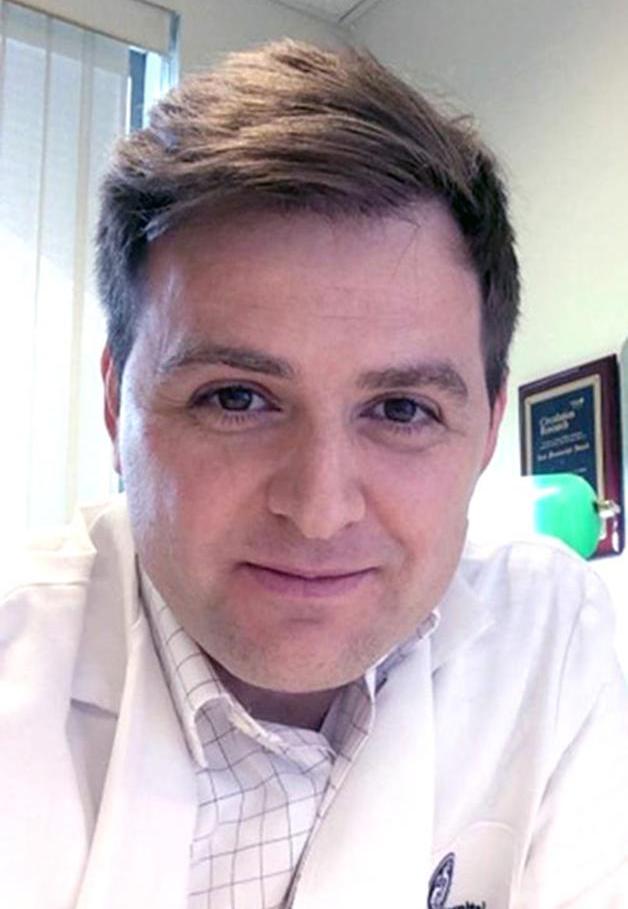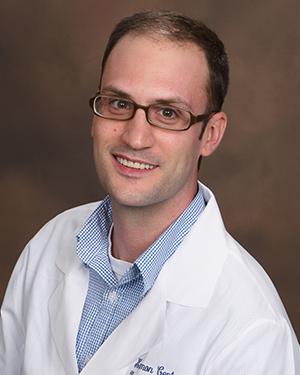20
th IVBM
Helsinki, June 3-7, 2018
Register Today!
Vasculata 2018
St. Louis, MO
July 23 - 26, 2018
Vascular Biology
Newport, RI
October 14-18, 2018
|
Career Center
Job seekers - visit our career center, upload your CV, get email alerts when jobs are posted
Employers - post your job on the job board. NAVBO members get a $150 discount!
http://www.navbo.org/jobs
|

Shop at Amazon?
Help Support NAVBO
|
|
 |
|
|
It's Not Too Late to Register for the IVBM
|
 |
|
 |
June 3-7
|
Register Today
As the premier international event in vascular biology, IVBM2018 provides a unique opportunity for the international biomedical community to unite and exchange information, identify new directions, and support the next generation of scientists in vascular medicine. Organized biennially, the IVBM is widely recognized as a showcase for cutting edge basic and translational research in vascular biology.
Register Today!
|
June 14 Webinar with Juan Melero-Martin

Join us on June 14 at 1:00pm EDT for Dr. Melero-Martin's presentation,
"Engraftment of Bioengineered Vascular Networks." Dr. Melero-Martin is an Associate Professor at Boston Children's Hospital.
To register for the webinar please go to
http://www.navbo.org/events/webinars/711-webinar062018
August 2 Webinar with Michael Dellinger

Our webinar attendees requested a webinar on Lymphatics, so please join us on August 2 at 1:00pm EDT for Dr. Dellinger's presentation,
"Lymphatic Vessels and Vanishing Bones: Animal Models of Lymphatic Anomalies with Bone Involvement." Dr. Dellinger is an Assistant Professor at UT Southwestern Medical Center.
The webinar is sponsored by the Lymphatic Malformation Institute and the Lymphangomatosis & Gorham's Disease Alliance.

To register for the webinar please go to
http://www.navbo.org/events/webinars/718-webinar082018
Please note: we will not be holding a July webinar
|
Call for Trainees for NAVBO Committees
If you are interested in being on the Education, Communication or Membership Committee, please send your application to the appropriate committee chair by May 31. Go to www.navbo.org/cte-application for more information.
Early bird registrations end:
Vasculata 2018 - June 1
Vascular Biology 2018 -August 15
Nominate a colleague for a Meritorious Award:
Nominations for the 2019 Earl P. Benditt Award and the Judah Folkman Award in Vascular Biology are due July 8.
NAVBO Travel Awards are available for the following meetings:
|
|
ENIGMA Young Investigator Prize
|
The "Verein für wissenschaftliche Fachtagungen in der Biomedizin" (VWFB) wants to encourage young scientists to develop bold ideas and hypotheses in emerging fields of contemporary life science research and to discuss such ideas with a small and dedicated group of scientists.Therefore, the (VWFB) has announced the 15.000€ ENIGMA Young Investigator Prize (ENIGMA YIP) to enable a junior scientist to host a small, closed and informal think-tank meeting on a topic of his/her choice.
Details of the prize are outlined in this pdf and on VWFB's website (
www.vwfb.de).
The deadline for submission of applications is June 20, 2018.
Please alert your colleagues and your most promising junior scientists of this unique opportunity.
|
|
Spotlight on Trainees
(from the May 3 issue)
|
Applications solicited for Science and SciLifeLab's Prize for Young Scientists
For the sixth year, Science/AAAS and SciLifeLab, a coordinated effort of four universities, have joined forces to recognize outstanding recent doctoral graduates in the life sciences (Ph.D. awarded between January 1, 2016, and December 31, 2017). This award, intended to provide encouragement to young scientists beginning their scientific careers, includes a grand prize of $30,000, as well as $10,000 to winners in each of three other subject categories (Cell and Molecular Biology; Genomics and Proteomics; Ecology and Environment; Translational Medicine). Applications are due July 15, 2018. Winners will have their essays prominently published and will be honored in Stockholm, Sweden, in December of this year.
|
The Lab of Dr. Elisa Boscolo
|
|
Lessons Learned
(from the May 3 issue)
|
It's time to fill the empty spaces ... in the laboratory and in your personal life!
... and all of a sudden ... POOF! You jumped to the other side!
You have dreamed about it all of your life (or most of it) and you just cannot believe it has really happened. While you are pinching yourself to be sure it's not a dream, your eyes open wide and what do you see? An empty office and an empty laboratory (Well, I wouldn't even call it a laboratory as it's just four walls and a stack of empty shelves!). Now you really miss your old lab mates and your previous mentor.
My name is Elisa Boscolo. I did my postdoctoral training at Boston Children's Hospital and have been an Assistant Professor at the Cincinnati Children's Hospital since 2014. Back then it surely was frustrating to start from scratch in a new institution and in a different city. . . .
Read the entire article and other lessons learned at
http://www.navbo.org/resources/lessons-learned.
If you would like to share your lessons learned as you moved into your role as an independent investigator, send your submission to
editor@navbo.org
.
|
|
Congratulations to Dr. D'Amore
 Patricia A. D'Amore, Ph.D., MBA, the Charles L. Schepens Professor of Ophthalmology at Harvard Medical School, Vice Chair for Basic and Translational Research, and Director of the Schepens Eye Research Institute of Massachusetts Eye and Ear, has been elected to the American Academy of Arts and Sciences for exceptional scholarship in the field of biomedicine. Dr. D'Amore will be inducted as part of the Class of 2018 at a ceremony in Cambridge, Mass., in October. Founded in 1780, the Academy honors exceptional scholars, leaders, artists, and innovators, engaging them in sharing knowledge and addressing challenges facing the world. Past inductees include Benjamin Franklin, Martin Luther King, Jr., and Albert Einstein. Dr. D'Amore, a NAVBO member since 1995, is an internationally-recognized expert in vascular development and pathology who has been at the forefront of angiogenesis research for over three decades. Dr. D'Amore's research findings formed the scientific foundations for the development of a number of anti-VEGF therapies currently used to treat various cancers and intraocular vascular diseases. Congratulations, Pat! Patricia A. D'Amore, Ph.D., MBA, the Charles L. Schepens Professor of Ophthalmology at Harvard Medical School, Vice Chair for Basic and Translational Research, and Director of the Schepens Eye Research Institute of Massachusetts Eye and Ear, has been elected to the American Academy of Arts and Sciences for exceptional scholarship in the field of biomedicine. Dr. D'Amore will be inducted as part of the Class of 2018 at a ceremony in Cambridge, Mass., in October. Founded in 1780, the Academy honors exceptional scholars, leaders, artists, and innovators, engaging them in sharing knowledge and addressing challenges facing the world. Past inductees include Benjamin Franklin, Martin Luther King, Jr., and Albert Einstein. Dr. D'Amore, a NAVBO member since 1995, is an internationally-recognized expert in vascular development and pathology who has been at the forefront of angiogenesis research for over three decades. Dr. D'Amore's research findings formed the scientific foundations for the development of a number of anti-VEGF therapies currently used to treat various cancers and intraocular vascular diseases. Congratulations, Pat!
Welcome to our New Members:
Yunus Abdussalam, Lancaster University
Haley Barlow, UT Southwestern Medical Center
Zhiyu Dai, Northwestern University
Cristina Espinosa, Oregon Health Science University
Hillevi Ets, Salisbury University
Rajat Gupta, Brigham and Women's Hospital
Brendan O'Brien, Albany Medical College
Jesse Williams, Washington University in St. Louis
|
|
Recent Publications by NAVBO Members
|
| Suppression of TGFβ-mediated conversion of endothelial cells and fibroblasts into cancer associated (myo)fibroblasts via HDAC inhibition
British Journal of Cancer
BACKGROUND: Cancer-associated fibroblasts (CAFs) support tumour progression and invasion, and they secrete abundant extracellular matrix (ECM) that may shield tumour cells from immune checkpoint or kinase inhibitors Read more GPR68 Senses Flow and Is Essential for Vascular Physiology
Cell
Mechanotransduction plays a crucial role in vascular biology. One example of this is the local regulation of vascular resistance via flow-mediated dilation (FMD). Read more Lung epithelial-specific TRIP-1 overexpression maintains epithelial integrity during hyperoxia exposure
Physiological Reports
The onset and degree of injury occurring in animals that develop hyperoxic acute lung injury (HALI) is dependent on age at exposure, suggesting that developmentally regulated pathways/factors must underlie initiation of the epithelial injury and subsequent repair. Read more Up-regulation of SFTPB expression and attenuation of acute lung injury by pulmonary epithelial cell-specific NAMPT knockdown
FASEB Journal
Although a deficiency of surfactant protein B (SFTPB) has been associated with lung injury, SFTPB expression has not yet been linked with nicotinamide phosphoribosyltransferase (NAMPT), a potential biomarker of acute lung injury (ALI). Read more Rudhira/BCAS3 is essential for mouse development and cardiovascular patterning
Scientific Reports
Rudhira/Breast Carcinoma Amplified Sequence 3 (BCAS3) is a cytoskeletal protein that promotes directional cell migration and angiogenesis in vitro and is implicated in human carcinomas and coronary artery disease. Read more Smooth muscle cells of human veins show an increased response to injury at valve sites
Journal of Vascular Surgery
OBJECTIVE: Venous valves are essential but are prone to injury, thrombosis, and fibrosis. Read more Actin polymerization contributes to enhanced pulmonary vasoconstrictor reactivity after chronic hypoxia
American Journal of Physiology - Heart and Circulatory Physiology
Chronic hypoxia (CH) augments basal and endothelin-1 (ET-1)-induced pulmonary vasoconstrictor reactivity through reactive oxygen species (ROS) generation and RhoA/Rho kinase (ROCK)-dependent myofilament Ca2+ sensitization. Read more |
Industry News (from the May 3 issue)
|
Occurrence of vector-borne diseases jumps over last decade
Researchers at the Centers for Disease Control and Prevention report that the number of
vector-borne illnesses in the U.S. tripled
to nearly 650,000 cases over the period from 2004 to 2016. Cases of tick-borne disease led the way, more than doubling to account for more than three-quarters of all vector-borne disease. Lyme disease represented the vast majority of tick-borne diseases during this interval. The Lyme disease burden is 300,000, a number 10 times higher than what is nationally reported. In rare cases, infection of the heart by the Lyme pathogen Borrelia burgdorferi can cause Lyme carditis, associated with arrhythmias and sudden cardiac death. Warmer weather is coming - check for ticks after time outdoors!
Single-cell RNA sequencing in breast cancer-associated endothelial cells
Oncotarget
Investigators at UC-San Francisco, UC-Irvine and National Cheng Kung University in Taiwan have characterized global gene expression profiles of tumor-associated endothelial cells isolated from human breast cancerous tissues compared with those in normal breast tissue, using single cell RNA sequencing. More than 1300 genes were differentially expressed between these two EC phenotypes. Bioinformatic analysis separated the cancerous versus control ECs into two distinctive clusters, and disease biomarker analysis indicated that these differentially expressed genes are highly correlated with breast neoplasm diseases. Enrichment analysis software associated these genes with extracellular matrix signaling pathways. The authors conclude that ECM-associated genes play pivotal roles in breast cancer EC biology, some potentially serving as tumor-associated endothelial cell biomarkers for distinct cancers.
Hippo Signaling in Cardiac Fibroblast Development
Developmental Cell
During development, the cardiac epicardium contains progenitors of non-cardiomyocytes that are essential for eventual cardiac function. Hippo, a kinase-dependent pathway that inhibits Yap-mediated transcription, is a regulator of organ size in developing hearts. Epicardial-specific deletion of the Hippo kinases Lats1/2 was lethal in embryos, associated with defective coronary vasculature remodeling. Lats1/2 mutant cells were arrested in their developmental trajectory, with epicardial markers persisting and expanded expression of Yap transcriptional targets.
|
|
|